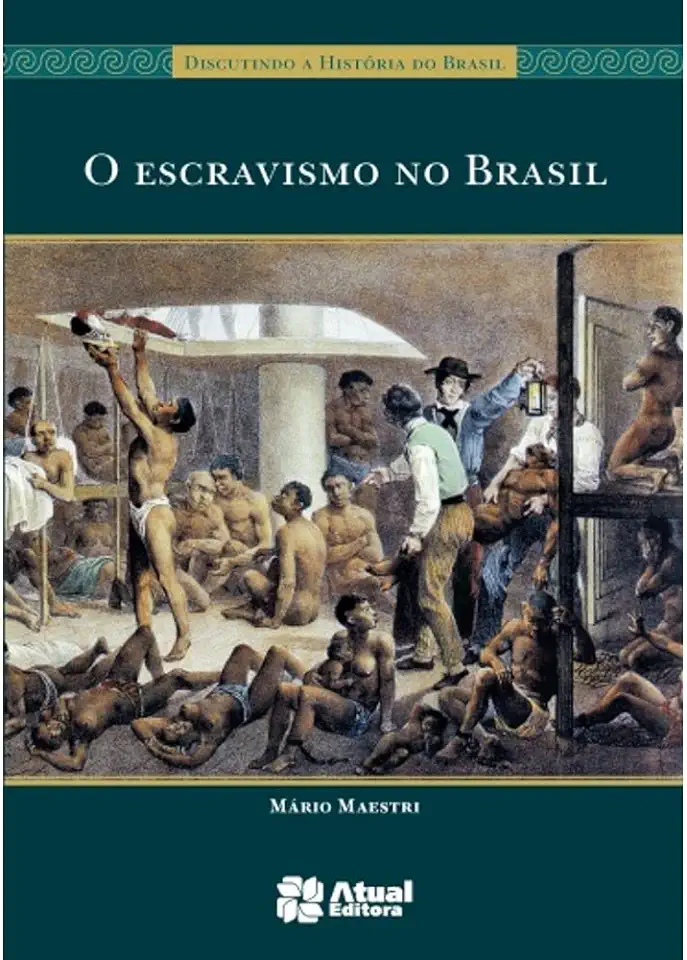
Slavery in Brazil - Mário Maestri
Slavery in Brazil: A History
Introduction
Slavery was a fundamental part of Brazilian society for over three centuries. From the arrival of the first Portuguese settlers in the 16th century until its abolition in 1888, an estimated 12 million Africans were forcibly brought to Brazil to work on sugar plantations, coffee farms, and other agricultural enterprises.
The institution of slavery had a profound impact on Brazilian society and culture. It shaped the country's racial and social hierarchies, and it left a legacy of racism and inequality that persists to this day.
The Transatlantic Slave Trade
The transatlantic slave trade was one of the largest forced migrations in human history. It began in the 15th century, when Portuguese explorers first began to bring African slaves to Europe. By the 18th century, the trade had reached its peak, with an estimated 10 million Africans being transported to the Americas each year.
Brazil was the largest importer of African slaves in the Americas. Between 1500 and 1888, an estimated 12 million Africans were brought to Brazil, more than any other country in the world.
The majority of African slaves who were brought to Brazil came from West Africa. They were captured by African slave traders and sold to European slave traders, who then transported them across the Atlantic Ocean to Brazil.
The journey across the Atlantic was often horrific. Slaves were packed into overcrowded ships, where they were subjected to disease, malnutrition, and abuse. Many slaves died during the journey, and those who survived were often in poor health when they arrived in Brazil.
Slavery in Brazil
Slavery was a fundamental part of Brazilian society for over three centuries. Slaves were used on sugar plantations, coffee farms, and other agricultural enterprises. They were also used as domestic servants and in other occupations.
The conditions of slavery in Brazil were often brutal. Slaves were forced to work long hours, and they were often subjected to physical and sexual abuse. They were also denied basic rights, such as the right to own property or to receive an education.
Despite the harsh conditions, slaves in Brazil often resisted their enslavement. They ran away from their masters, and they sometimes organized revolts. The most famous slave revolt in Brazil was the Palmares Republic, which was established in the 17th century and lasted for over 60 years.
The Abolition of Slavery
The abolition of slavery in Brazil was a long and complex process. It began in the 18th century, when the Portuguese government began to restrict the importation of African slaves. In 1850, the Brazilian government passed a law that prohibited the slave trade, but it did not free the slaves who were already in Brazil.
The final abolition of slavery in Brazil came in 1888, when Princess Isabel, the daughter of Emperor Pedro II, signed the Golden Law. The Golden Law freed all slaves in Brazil, without any compensation to their former owners.
The abolition of slavery was a major turning point in Brazilian history. It marked the end of a system that had been based on racial inequality and exploitation. It also paved the way for the development of a more democratic and egalitarian society.
The Legacy of Slavery
The legacy of slavery in Brazil is still visible today. Brazil is a racially diverse country, and there is a significant gap between the living standards of whites and blacks. Blacks are more likely to live in poverty, and they are less likely to have access to education and healthcare.
The legacy of slavery also affects Brazilian culture. Brazilian society is still marked by racism and discrimination, and there is a lack of understanding of the history of slavery.
Conclusion
Slavery was a major part of Brazilian society for over three centuries. It had a profound impact on the country's racial and social hierarchies, and it left a legacy of racism and inequality that persists to this day.
The abolition of slavery in Brazil was a major turning point in Brazilian history. It marked the end of a system that had been based on racial inequality and exploitation. It also paved the way for the development of a more democratic and egalitarian society.
However, the legacy of slavery is still visible in Brazil today. There is a significant gap between the living standards of whites and blacks, and blacks are more likely to live in poverty and to have less access to education and healthcare. Brazilian society is still marked by racism and discrimination, and there is a lack of understanding of the history of slavery.
It is important to remember the history of slavery in Brazil in order to understand the country's present. By understanding the past, we can work to build a more just and equitable future.